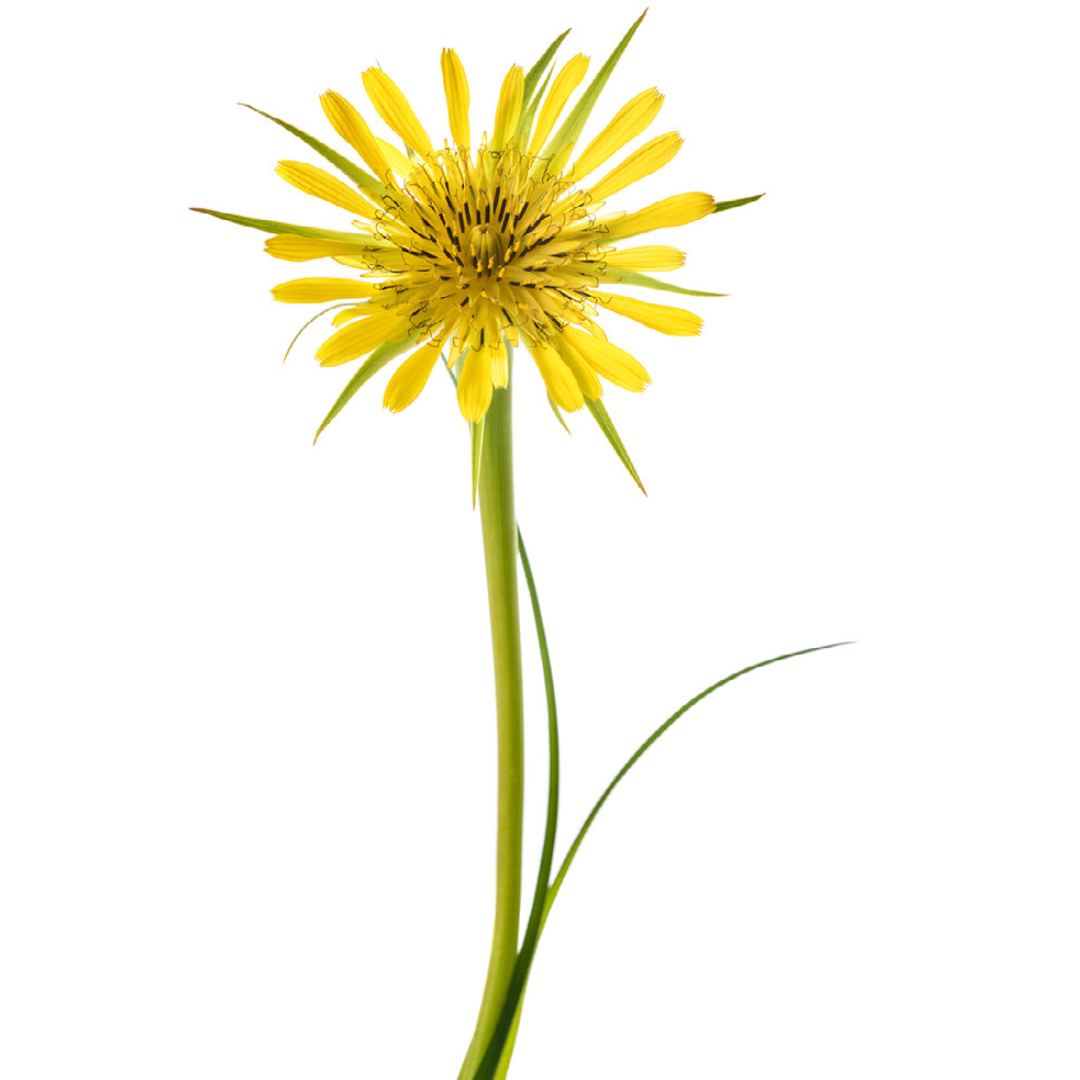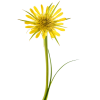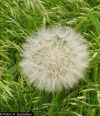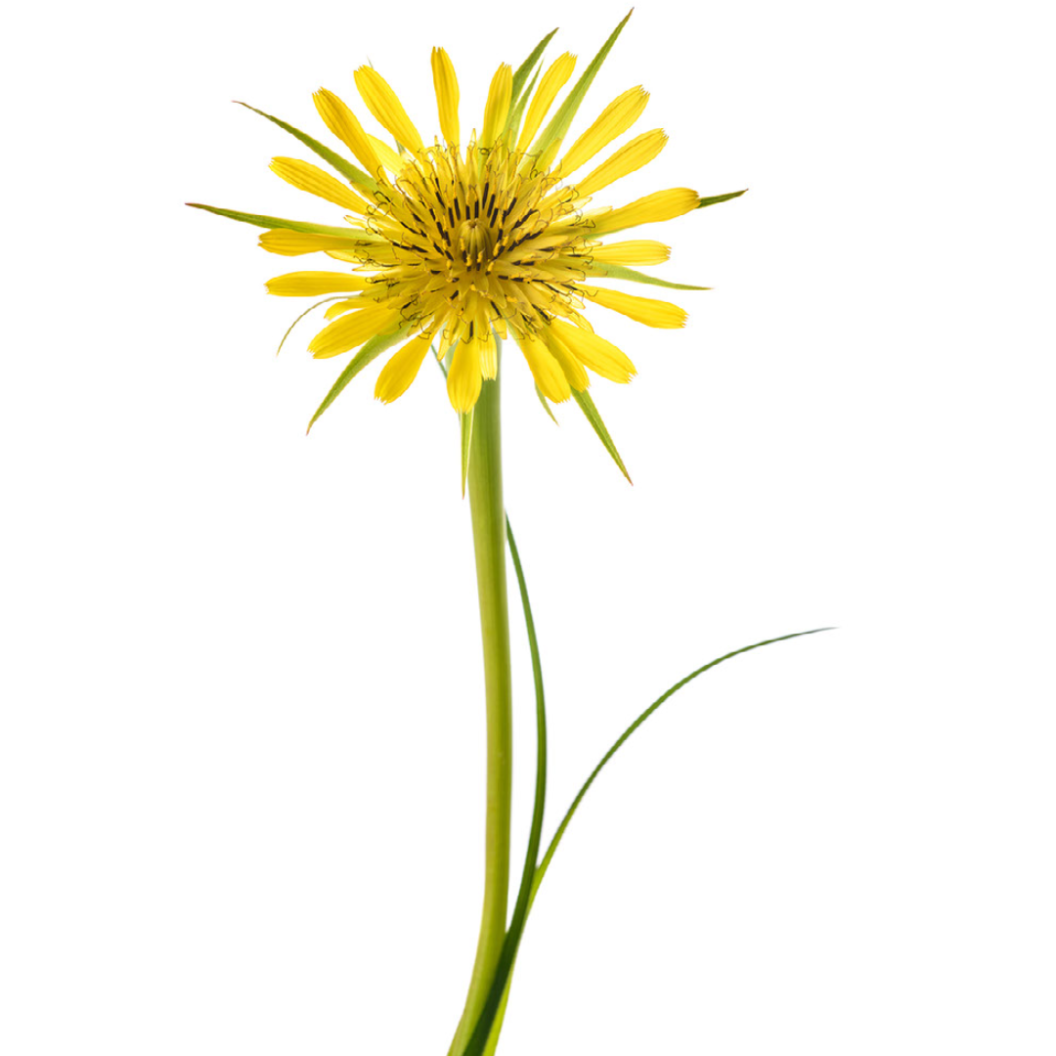





Yellow Salsify
DESCRIPTION: Yellow salsify is a plant that is known for its bright yellow flowers that resemble dandelions. It grows tall and thin, with long, narrow leaves that are slightly prickly to the touch. The plant produces a tall stem that holds the flower head high above the surrounding foliage. When the flowers die, they turn into fluffy, white seed heads that blow in the wind like miniature parachutes. Some people consider yellow salsify to be a weed, as it can be found growing in gardens, lawns, and along roadsides. Despite its weedy reputation, many people enjoy the bright yellow flowers and consider them to be a cheerful addition to the landscape."
SCIENTIFIC NAME: Tragopogon dubius
OTHER NAMES: Yellow Oyster Plant, Western Salsify, Yellow Goat's Beard, Common Salsify
LEAF TYPE: Broadleaf
FLOWERS: The flowers of yellow salsify look a lot like dandelion flowers, with bright yellow petals arranged in a circular shape around a central disk. The petals are thin and delicate, and they radiate outwards from the center of the flower. The center of the flower is made up of many tiny little florets that are tightly packed together, and they can appear brown or black in color. The flowers can grow up to 3 inches (7.6 cm) wide, and they have a bright and sunny appearance that can add a pop of color to any landscape.
LEAVES: The leaves of yellow salsify are long and narrow, with a slightly prickly texture when touched. They grow directly from the stem of the plant and are arranged alternately along its length. The leaves have a slightly wavy edge and are smooth to the touch, with a light green color. They can grow up to 12 inches (30 cm) long and 1 inch (2.5 cm) wide, and they taper off at the tip. The leaves can also have a slightly hairy or fuzzy appearance, which can make them look a bit more textured.
LIFE CYCLE: Annual & Biennial
HOW TO IDENTIFY: Yellow salsify can be easily identified by its bright yellow flowers that resemble dandelions, as well as its long, thin, slightly prickly leaves. The plant can grow up to 4 feet (1.2 meters) tall and has a long, slender stem that holds the flower head high above the foliage. When the flowers die, they turn into fluffy, white seed heads that blow in the wind like miniature parachutes. The plant can often be found growing in gardens, lawns, and along roadsides.
MECHANICAL CONTROL RECOMMENDATIONS:
1. Hand pulling - More Info
2. Mowing - More Info
3. Tilling - More Info
4. Mulching - More Info
5. Grazing - More Info
6. Solarization - More Info
7. Flaming - More Info
8. Mechanical Cultivation - More Info
9. Barrier Methods - More Info
10. Regular Maintenance - More Info
CHEMISTRY RECOMMENDATIONS:
"Pre-emergent herbicides:
Glyphosate: While typically used as a post-emergent herbicide, glyphosate can also be used as a pre-emergent in some situations. It's effective against a broad spectrum of weeds, but keep in mind that it can also affect non-target plants, so use it with caution.
Oryzalin: Oryzalin is commonly used as a pre-emergent herbicide for broadleaf and grassy weeds. It can provide good control of Tragopogon dubius when applied before its seeds germinate.
Pendimethalin: Pendimethalin is effective against many annual grasses and broadleaf weeds, including Tragopogon dubius. It forms a barrier in the soil that prevents weed seedlings from emerging.
Dithiopyr: Dithiopyr is a pre-emergent herbicide that provides control against a variety of grasses and broadleaf weeds. It's commonly used on lawns and ornamental landscapes.
Isoxaben: This herbicide is effective against many broadleaf weeds, including Tragopogon dubius. It's often used in ornamental beds and landscapes.
Prodiamine: Prodiamine is known for its long-lasting control of a wide range of annual grasses and broadleaf weeds. It's commonly used on turfgrass and landscapes.
Post-emergent herbicides:
2,4-D: This herbicide is effective against a wide range of broadleaf weeds, including Tragopogon dubius. It's commonly used on lawns, pastures, and non-crop areas.
Dicamba: Dicamba is another broadleaf herbicide that targets a variety of weeds, including Tragopogon dubius. It's often used in lawns, agricultural fields, and non-crop areas.
MCPA: MCPA is a selective herbicide that targets broadleaf weeds like Tragopogon dubius. It's commonly used on lawns and turfgrass.
Clopyralid: Clopyralid is effective against many broadleaf weeds, including Tragopogon dubius. It's often used in pastures, rangelands, and non-crop areas.
Glyphosate: Glyphosate is a non-selective herbicide that can effectively control Tragopogon dubius and many other weeds. However, be cautious when using it in areas with desirable plants, as it can kill any vegetation it comes into contact with.
Sulfentrazone: Sulfentrazone is effective against a variety of broadleaf weeds, including Tragopogon dubius. It's often used in lawns, landscapes, and non-crop areas.
Triclopyr: Triclopyr targets a range of broadleaf weeds and woody plants. It's often used to control invasive plants and is effective against Tragopogon dubius.
Selective herbicides:
2,4-D: This is a widely used selective herbicide for controlling broadleaf weeds in lawns, pastures, and non-crop areas. It's effective against Tragopogon dubius and many other broadleaf weeds.
MCPA: MCPA is another selective herbicide that targets broadleaf weeds like Tragopogon dubius. It's often used on lawns and turfgrass.
Clopyralid: Clopyralid is effective against a range of broadleaf weeds, including Tragopogon dubius. It's commonly used in pastures, rangelands, and non-crop areas.
Triclopyr: Triclopyr is effective against a variety of broadleaf weeds and woody plants. It's often used to control invasive plants and can be effective against Tragopogon dubius.
Dicamba: Dicamba is used to control broadleaf weeds in various settings, including lawns, agricultural fields, and non-crop areas.
Aminopyralid: Aminopyralid is known for its long-lasting control of certain tough broadleaf weeds. It's used in various applications, including pastures, rangelands, and non-crop areas.
Fluroxypyr: Fluroxypyr is effective against many broadleaf weeds and is often used in lawns, turfgrass, and non-crop areas.
Non-Selective herbicides:
Glyphosate: Glyphosate is one of the most widely used non-selective herbicides. It effectively kills a broad range of plants, including Tragopogon dubius. However, be cautious when using glyphosate around desirable plants, as it will kill any vegetation it contacts.
Glufosinate: Glufosinate is another non-selective herbicide that can control a variety of weeds, including Tragopogon dubius. Like glyphosate, it should be used with caution to prevent damage to non-target plants.
Paraquat: Paraquat is a fast-acting non-selective herbicide that can effectively control weeds like Tragopogon dubius. It's often used in non-crop areas and industrial settings.
Diquat: Diquat is another non-selective herbicide that can provide quick control of a wide range of weeds. It's often used in aquatic environments and non-crop areas.
Pelargonic Acid: This herbicide is derived from natural sources and works by desiccating plant tissues. It's non-selective and can provide relatively quick results.
Recommended Prevention
Recommended Control

